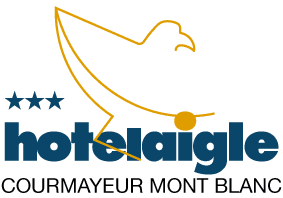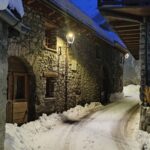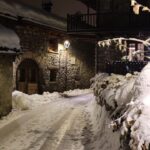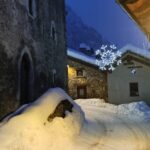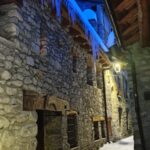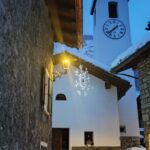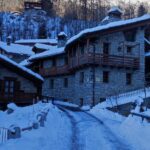The village of Entrèves, as its name in Patois (the local language originating from ancient French) says, it means “between the waters”, referring to the Dora di Veny and the Dora di Ferret, the two streams descending from the valleys by the same name.
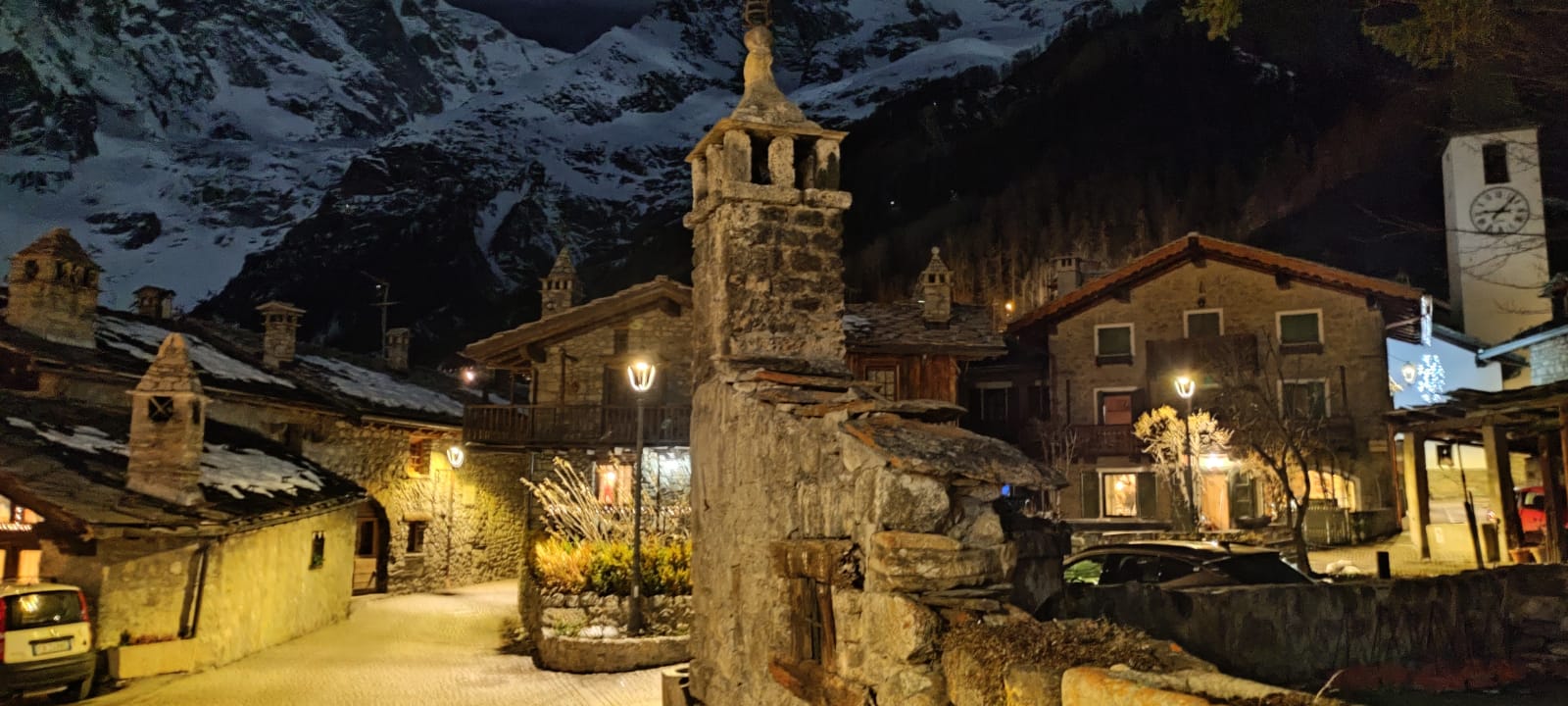
Traits of history
The location where today is the village of Entrèves was probably inhabitated since pre-history, but the construction of a village probably dates back to the first centuries of the second millennium. The oldest buildings that you can still see today are recorded in high-medieval documents, as the stonghold to be found in the heard of the village, today (and for the last three-centuries) owned by the Passerin d’Entreves family, a noble family from the Aosta Valley
The house, restored in 1913, is mentioned in a document dating from in A.D. 1351, so we can suppose that the whole village became to take the present look around those centuries with more houses, stables, workshops and storage for crops. Indeed the economy of the village was based on cattle breeding and farming. The plan of Entrèves as well as the adjacent valleys Ferret and Veny served as alpine pastures and farmland, with production of grains, cheeses and cured meats.
Still today you can see in the village many buildings that once were barns and stables, today turned into very fine holiday homes, restaurants, b&b and hotels.
The most massif and ancient building is definitely the stronghold Passerin d’Entrèves, today private property that can only be seen from the outside. It consists of three floors punctuated by beautiful windows with inverted keel architraves, also restored but faithful to the originals of the fourteenth-fifteenth Century.
Built by Hugonetus de Curia filius Johannis, in the Fifteenth Century, the building passed into the hands of the Sarriod d’Introd family and later, in the Sixteenth Century, to the wealthy Favre family which become extinct in the first half of the Seventeenth Century. Therefor the property passed onto the barons Roncas and finally to the Passerin d’Entrèves, the current owners.
On the opposite side of the street, next to a beautiful arch, there is a plaque that reads “Les Ecuries du Château”, or the “stables of the castle” which, it is assumed, were once located in this building.
Behind the stronghold stands the old chapel of the village, still in use, dedicated to Santa Margherita.
The exact year of its foundation is not known, but the chapel is mentioned during a pastoral visit on 19 July 1567. Very simple and sober, the chapel has a gabled façade with an oculus above the only entrance, all plastered in white. Next to it is the slender bell tower surmounted by a slender spire.
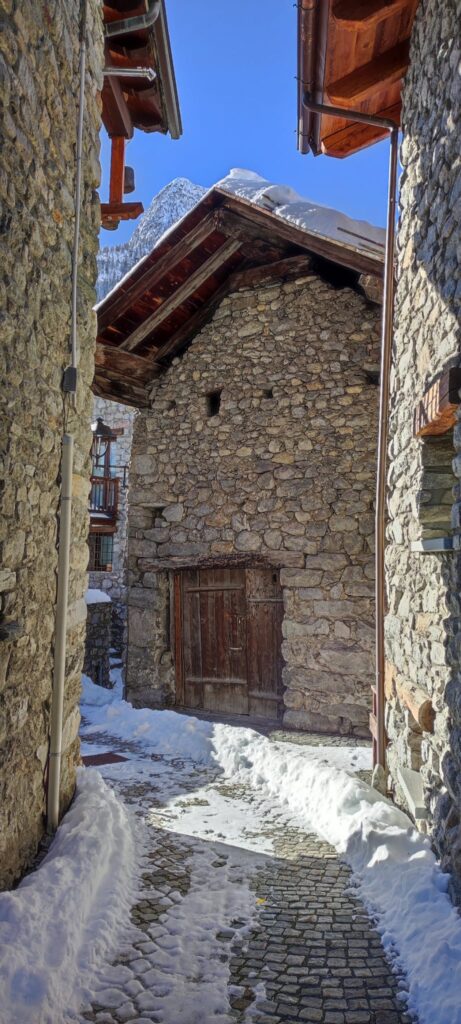 A characteristic of Entrèves is that you can still see beautiful barns and old stables, some of which have been restored and converted into homes. These buildings tell us of a society that was once purely peasant which, until a not so distant past, cultivated the vast meadows of the surroundings with rye and barley.
A characteristic of Entrèves is that you can still see beautiful barns and old stables, some of which have been restored and converted into homes. These buildings tell us of a society that was once purely peasant which, until a not so distant past, cultivated the vast meadows of the surroundings with rye and barley.
Many of the doors of these barns have architraves (almost always dating back to the mid-nineteenth century), or are decorated with inverted or hanging “tau” (the “tau” is an ancient Jewish symbol of belonging to the law of the Torah, later taken up and spread by St. Francis of Assisi as the emblem of the cross), as well as by more usual Latin and Greek crosses.
Reaching the small square you can appreciate the ancient houses attached to each other almost like a semicircle; The whole nucleus near the old church represents the original embryo of the town, where the old elementary school and the dairy were also located.
Walking up to Col du Géant Street, you will notice other characteristic buildings, dating from the last century, and barns with beautiful entrance doors, many of which are embellished with crosses, to call the divine protection over crops and hay once stored inside.
Exploring the alleys around the chapel of Santa Margherita, you can immerse yourself in an atmosphere with an ancient flavor, made up of stone buildings, some characterized by wooden balconies decorated with different motifs depending on the use for which the rooms on the floor were intended.
ATTRACTIONS
Every summer, usually on Mondays, the village hosts the traditional antiques market of Santa Margherita which winds its way through the picturesque center of Entrèves.
Entrèves in the Winter
Entrèves in the Summer
Book now
By sending a booking request via our website or by contacting us directly via email or telephone, you are guaranteed to get the most advantageous deal possible.
To know the best rates for your stay, and to book your room, please either click on the button below to access our “online booking system” or fill-in and submit the following booking form:
or
fill in and submit the following booking form